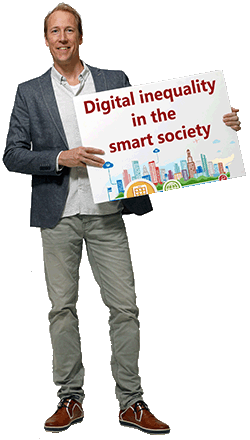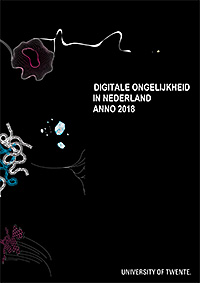Digital inequality in the social context: A qualitative analysis
Research in the field of digital inclusion has proliferated over the last decade and demonstrates the complexity of factors that influence how people use the Internet. Many of these factors have filtered through in recent policies (that for example aim at improving Internet skills) with as primary goal narrowing social exclusion in relation to everyday challenges. Often the implicit assumption is made that social and digital inclusion interact. The idea is that, depending on people’s offline circumstances, exclusion from the Internet–whether it through lack of access or skills–can result in relatively more or less disadvantages in everyday life. However, there is no thorough explanation on how digital and social inclusion interact, and whether interactions differ among domains in which social exclusion manifests itself (economic, cultural, social, personal). Research is mostly quantitative and attempts to describe the large picture of the problem. The mechanisms that explain how online inequalities (e.g., motivational, physical, skills or usage) effect one’s offline position (and the other way around) are yet to be explained in qualitative research. A better understanding and theoretical development is necessary for creating policies aimed at those who are socially excluded. Policies can be better targeted when the effects of providing technology and training on social exclusion are better understood. The overall research question is: How do digital and social inclusion indicators interact and mediate the effects of technology on daily life in low ses-family settings.
To answer the research question, several independent variables that explain the disadvantages that people experience in every-day life are categorized. Social and digital inclusion act as independent and interacting variables. The overview will focus on the effects of these variables on important potential advantages in four important domains of exclusion, namely the economic, cultural, social, personal realm (Helsper, 2012). To study the mechanisms of how social and digital inclusion interact, to confirm the theoretically derived variables, and to explore additional factors that affect outcomes in the four domains, the second part of the project consists of an in-depth qualitative study in which 50 families take part. The families will be equally divided in two groups of low and high ses (equally in terms of household condition, e.g., single mother, seniors, … ). During the year, we study how the uptake of technology affects their position in daily life. All families will be monitored for one year using two methods: (1) the technology itself will function as a methodology for social science research–an area underexplored at University of Twente. All actions conducted with the provided technology will be monitored, allowing us to gather a large amount of data on how it is used in the home environment and what people get out of it in relation to their status in society. (2) Monthly interviews will be conducted with each family to determine how the technology affects their social position in life, and the other way around, how social factors affect their use of technology.
Third, data extracted from the in-depth study will be analysed. From this, variables that can be added to the framework will be proposed. The result will be a better understanding of what factors mediate the interaction between digital and social inclusion. This brings us at the final part of the study. In this part practical polices that aim at digital inclusion by not only linking different types of digital inclusion to Internet outcomes, but also explain how this relates to the (offline) needs of groups of lower ses members will be proposed. The results of the in-depth analysis and the large scale qualitative study provide us with many details on how social inclusion is hindered in low ses member families. These details help us in creating effective interventions to eventually work towards a more equal society. Furthermore, the effects of technology provision alone, and technology with training will help us . The project will reach its objectives by bringing together experts in the field of digital and social inclusion. Furthermore, we aim at organizing public-private partnerships. The network of the principle proposer not only provides partly funding, but will also freely provide training and software for monitoring all online actions.
PhD: Anique Scheerder
Anique successfully defended her dissertation on December 17. Her dissertation can be found HERE.
Published articles:
2020 - Taking advantage of the Internet: A qualitative analysis to explain why educational background is decisive in gaining positive outcomes
2019 - Negative outcomes of Internet use: A qualitative analysis in the homes of families with different educational backgrounds
2019 - Internet use in the home: Digital inequality from a domestication perspective
2017 - Determinants of Internet skills, uses and outcomes. A systematic review of the second- and third-level digital divide






